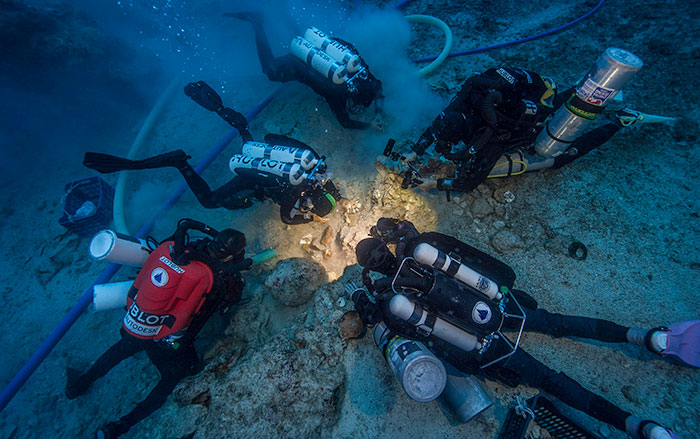
LEVITHA, GREECE—According to a Proto Thema report, five ancient Greek shipwrecks containing amphoras have been discovered at the bottom of the eastern Aegean Sea, near the small island of Levitha. These are the first ships documented by a team from the Ephorate of Underwater Antiquities, which plans to explore the area's isolated islands over the next three years to identify and record wrecked vessels. One of the ships, dating to just before the mid-third century B.C., was laden with amphoras from Carthage, Phoenicia, and the Aegean islands of Knidos, Kos, and Rhodes. The other wrecks contained cargoes dating from the second century B.C. through the second century A.D. Archaeologists also recovered an 881-pound granite anchor pole--the largest ever found in the Aegean--that likely belonged to a massive ship from the sixth century B.C. To read about a Greek merchant ship recently found in the Black Sea, go to “Ancient Shipwreck,” one of ARCHAEOLOGY’S Top 10 Discoveries of 2018.










